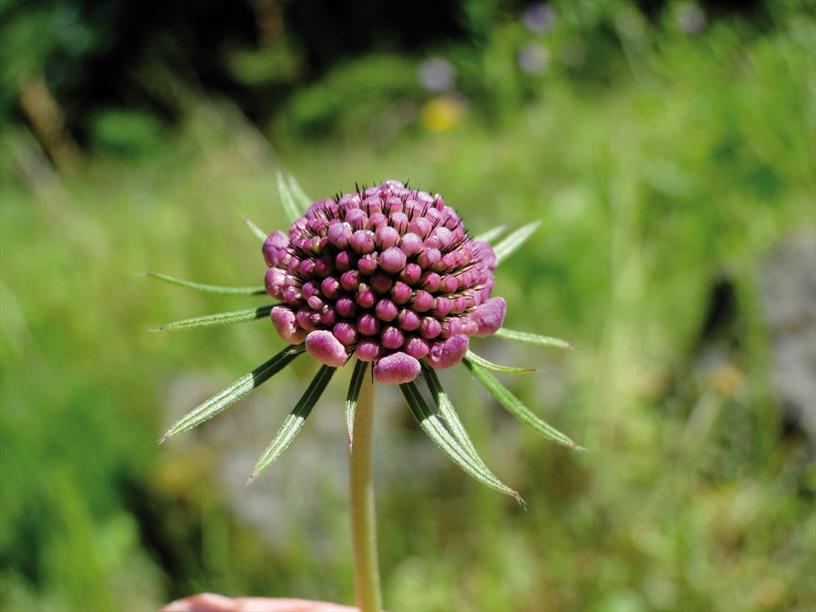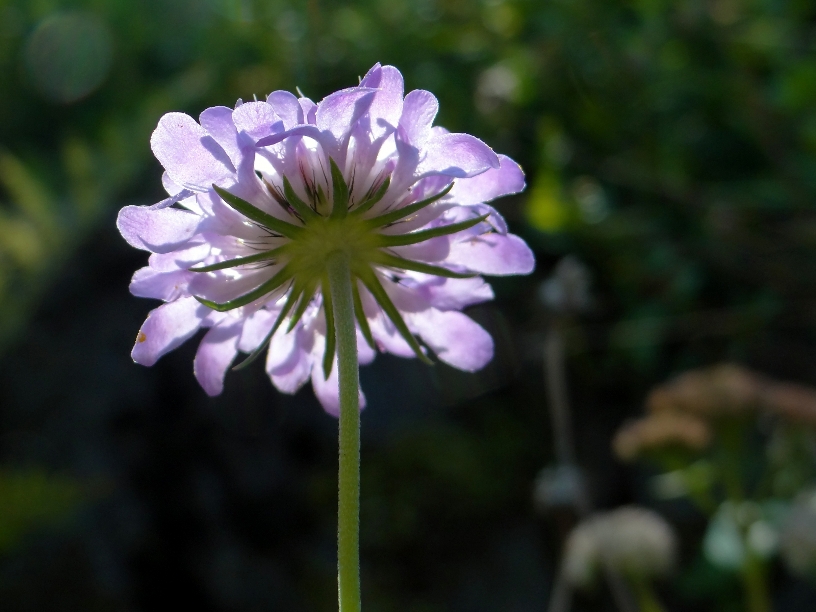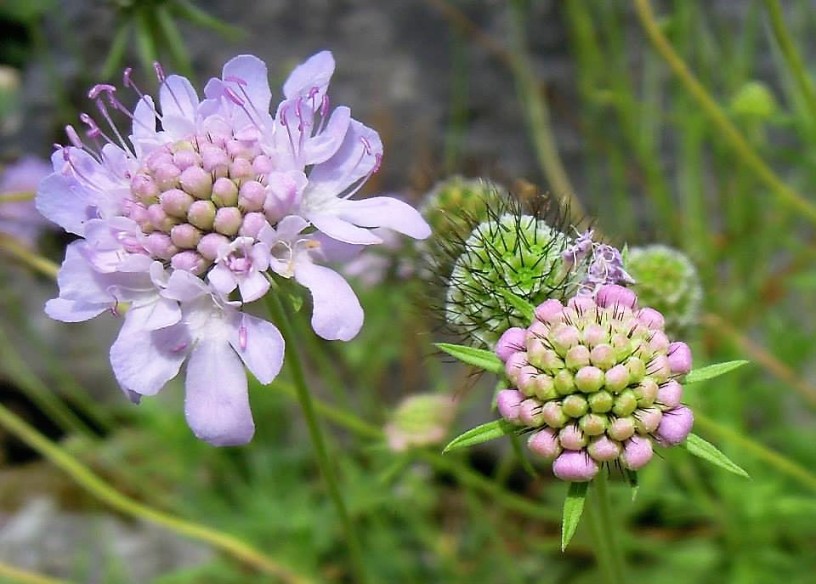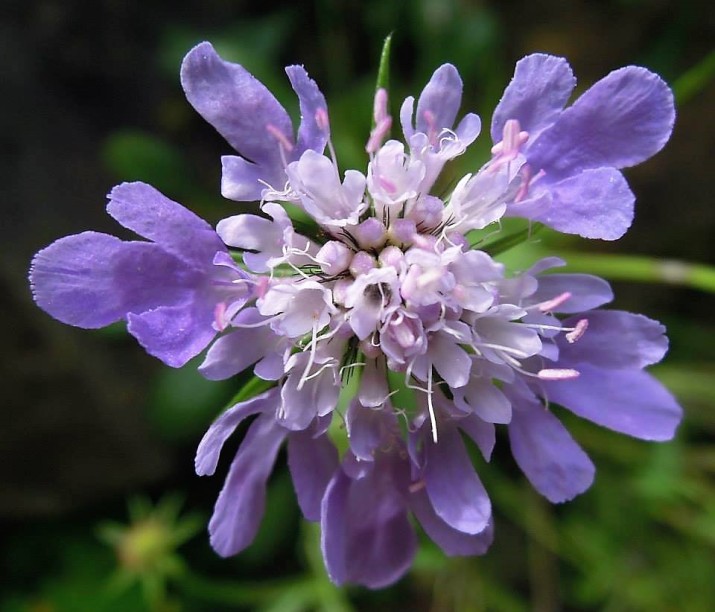Small Scabious
Scabiosa columbaria
Honeysuckle family (Caprifoliaceae)
Named as a result of a medieval brainwave
Small scabious flowers from July to September with lilac-blue, sometimes white, flowers that are arranged in a head of about 3.5 cm wide and have radiant ray florets. Under these heads are situated a ring of small, linear to lanceolate leaves arranged in a single row. These leaves are attached at the base and together form an open, star-shaped structure when viewed from below. The lowermost leaves are lyre-shaped to lyre-devided with a large ovate lobe. The other leaves are more finely divided.
The genus name Scabiosa originates from medieval thinking as the ripe fruit case has scabs just like the skin of someone with scabies. According to the teachings of the time, appearance was indicative of medicinal use (e.g. flowers with an eye in the illustration would be effective against eye infections) and so scabious was as a treatment for scabies. It was also used, probably unsuccessfully, for the plague, dropsy and all kinds of skin diseases. Columbaria means ‘dove coloured’. Cultivars of the small scabious are growing in many ornamental gardens.
Read more.... »Themes
Attractive to butterflies.
According to the teachings of the time, appearance was indicative of medicinal use (e.g. flowers with an 'eye' in the illustration would be effective against eye infections) and so the scabious was used as a treatment for scabies. It was also used, probably unsuccessfully, for the plague, dropsy and all kinds of skin diseases.
Details
| Description: | Herb, up to 90 cm. |
|---|---|
| Distributions: | Europe and southwestern asia |
| Habitat: | Calcareous grassland, roadside verges, along railway lines and (lime) quarries. |
| Year cycle: | Perennial (trees and shrubs included) |
| Hardiness: | -4 - 5 f (hardy - very cold winter) |
| Flowering period: | Juli - oktober |
| Flower color: | Purple, blue, white |
| Notes on flowers: | Flower lilac-blue, sometimes white. |
| Fruiting period: | Augustus - september |
| At its best: | Juli - september |
Sources
http://www.floron.nl/publicaties/rode-lijst-2012,http://www.pfaf.org/user/Plant.aspx?LatinName=Scabiosa+columbaria,
Floron 2012 Basisrapport, IUCNredlist.org



